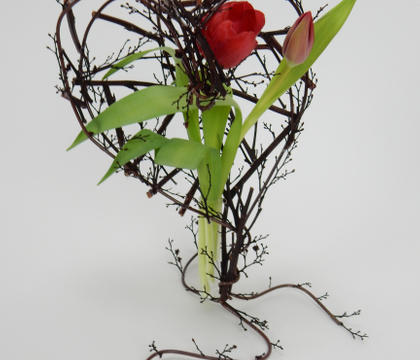Christine de Beer - effortless floral craftsman
Have a heart!
- 12 October 2013
This is my article that I wrote for the Sympathy Design Issue of
In the floral design world, the act of kindness, sympathy and even respect for our plant material is called "conditioning." It is often a hugely debated subject with advice ranging from traditional "home remedies" to the high tech solutions with a generous sprinkle of the bizarre.
Best quality designs are only possible with the best plant material. Knowing the best way to select, handle and care for plant material is easier when armed with a thorough understanding of what happens to a plant when severed from its roots.
Let's look at it from the plants perspective:
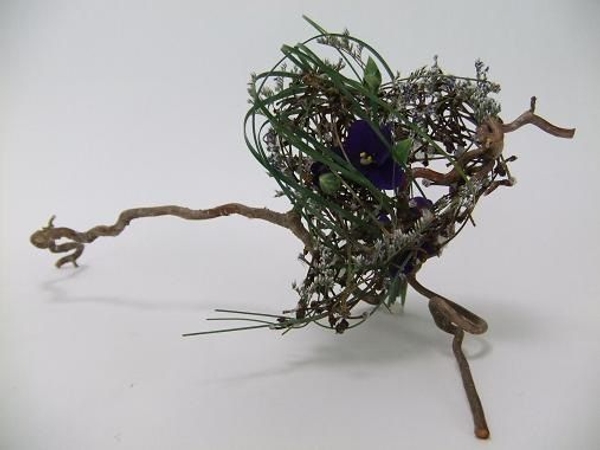
Plants have a vascular system similar to a spongy drinking straw.
Water is sucked up through the plant when the stem and leaves lose water through transpiration. The moment we cut the plant this vacuum is broken and air enters the vascular system. The plant no longer has the ability to supply the plant cells with the moisture and carbohydrates it requires to stay fresh, plump and alive.
At the same time the cells damaged by the cut causes the plant to release enzymes by the cells around the cut to signal that the plant is in trouble.
First the plant creates wound hormones to stop the loss of fluid and create scar tissue and will ultimately create new cells. Next the plant starts to compensate for the loss of fluid by drawing fluid from the leaves and the stem to the reproductive areas such as the flowers, seed or fruit causing the plant to wilt. Because all new growth has not developed a strong cellular structure it also collapses and wilts. Then the leaves start to shrivel to limit the surface areas exposed to the elements that can further cause moisture loss. And ultimately all plant functions are suspended to conserve energy and resources.
Our main objectives as designers are:
- To provide hydration and nourishment as quickly as possible.
- To keep photosynthesis to the minimum so that the plant is in a suspended state and can conserve its resources.
- To keep the vascular system open and prevent the plant from going into further shock.
- Prevent any further cell damage that can bruise the plant, cause further dehydration or introduce bacterial invasion.
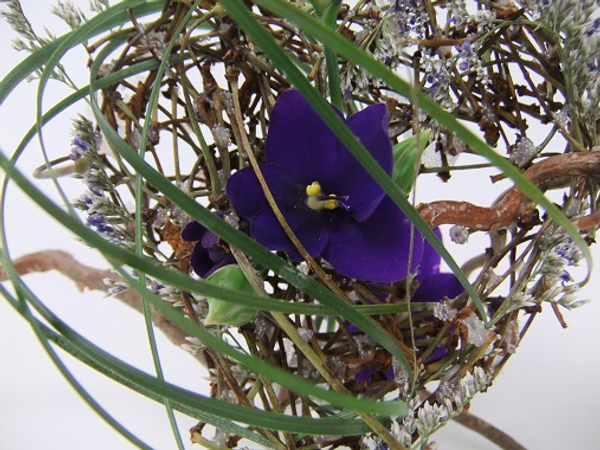
Flowers delivered to florists are treated differently to flowers cut from the wild or a garden.
Flowers intended for the retail market are cut days or even weeks before it is shipped to the florists. When you pick flowers from your garden or the wild they have been exposed to natural and environmental stresses such as bugs and diseases that the flowers that were grown in protected and controlled environments were not. If you are able to grow and cut your own flowers you can control how carefully they are handled. Flowers that are shipped and stored in temperature controlled environments are also often handled many times before being delivered. The flowers might be severely dehydrated and bruised but because of the temperature it would only become apparent once the flowers are left to warm to room temperature.
Making the cut:
Flowers cut from your garden or the wild
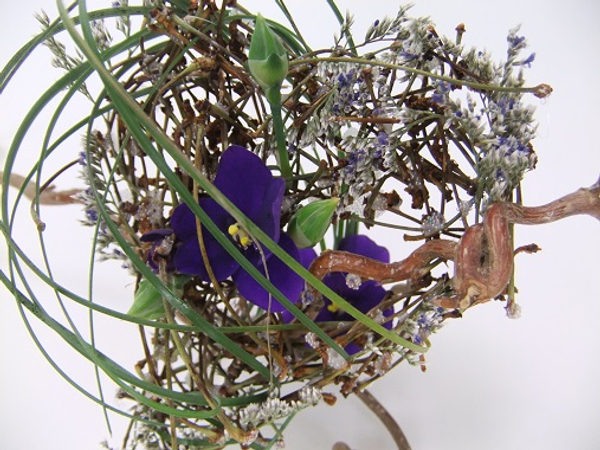
Always, always, always make sure you have permission to cut the flowers or plant material you are gathering.
If possible, thoroughly water the soil around the plants you intend to cut 24 hours before to fully hydrate. Cut the plants cleanly with sterilized shears or cutters, either early in the morning or early evening. Measure the stems you want to cut and add a bit extra to make sure the stems are longer than what you will require. As you cut the stems place it in spacious water filled containers and protect it from wind or sun. Support the flower heads. Remove the foliage that will fall below the water line. Try to handle the plant material as little as possible until it is fully hydrated (after 4 hours or even better, overnight) this is also a good time to get rid of any bugs.
Bringing your freshly cut treasures home
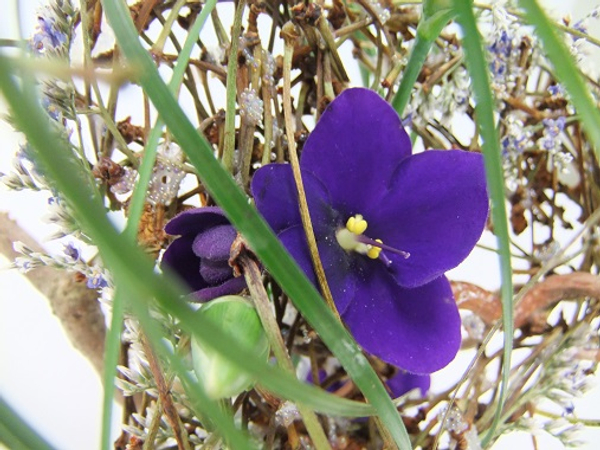
Make sure you have enough space for the flowers to either be packed in water filled buckets or for the plant material to lie flat so that it can be protected.
Check the temperature of the vehicle and cover the flowers to make sure it is protected from the wind. Do not expose the cut flowers to exhaust fumes. Pack the flowers just before leaving
A general guide to condition your freshly cut flowers:
Once you get to your design room you can now separate different types of flowers according to their conditioning needs. As an example: Never keep fresh cut daffodils with other flowers. The sap of the daffodils is toxic to all other flowers. Caramelize sap of milky stems over a flame and whittle away some of the bark on woody stems to create a larger surface for it to hydrate.
Wash and groom the plant material once it is plumped out and fully hydrated. Re-cut the stems every few days to avoid the fresh scar tissue from blocking the stem. Some designers swear by cutting the stems below water while others argue that the air is already introduced and cutting it underwater at this stage make no difference. Do not crush or hammer the stems to protect the vascular tissue so that it remains open to absorb moisture and limit bacterial growth. Add flower food if you prefer. I usually add the commercial kind. Some of the home remedies can introduce bacteria. But again it is up to you, as a designer to experiment and find what works for you. Some designers believe that the plant vascular system is already in a suspended state due to the stresses it is under and that flower food makes no difference.
Florist flowers delivered to you as a retailer:
Plant materials intended for the retail market have had some time to stabilize from the shock of being cut and the cells should be ready to hydrate and nourish the foliage or flowers. Most of the plant material are shipped "dry-packed" without water and should be cut and conditioned as soon as possible. Make sure you have plenty of water filled containers and clean equipment ready so that you can condition the flowers as soon as possible.
Picking your supplier and cut flowers and foliage
Buy only the best fresh plant material from a supplier who is kind and compassionate to, as well as passionate about the product they supply.
If at all possible buy local and in season.
Do not purchase flowers that are already weak stemmed, small bloomed or that will have a short lifespan. Check the foliage to see the age of the plant material, avoid it if the foliage is wilted, limp, diseased, bug ridden or even peeled away. Also check the stems of the flowers. Dark ends on stems means the flowers have already been "perked up' with boiled water and will not last long.
It is also best to avoid stems where the flowers are breaking bud or the majority of the flowers show colour or in too tight bud or too fully open.
When choosing tropical plant material it is important to inspect the flowers for bruised spots. All bruised areas deteriorate rapidly and become even uglier after conditioning.
A general guide to conditioning your flower delivery
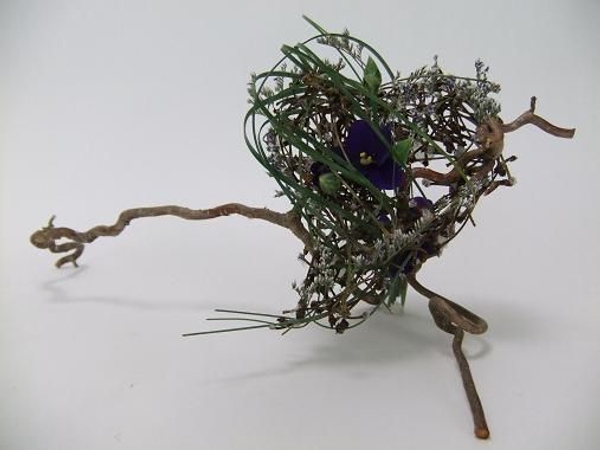
It has now been an extended period of time since the flowers and plant material have been severed from the plants and roots and the stem ends should be tightly sealed with the scar tissue and the wound is already healing.
This means the stem's vascular system is blocked and it will not be very effective in drawing up the much needed hydration.
Re-cut each stem (either underwater or not) to remove about 2.5 cm of the stem. I like to cut the stem at an angle to open up a larger surface. The cellular tissue of cut flowers are usually dehydrated and depleted of carbohydrates. Add commercial flower food to the water.
If milky stems are properly sealed you do not need to re-cut them. Just submerge the stem in deep water to hydrate throughout the outer stem wall.
Remove any foliage that will fall below the waterline. Trim the foliage rather than pull or rip to avoid any further wounds or scarring. Same with removing thorns, rather clip the thorns than rasping the stems that will create further stress and moisture loss and introduce bacteria.
Be extra careful when handling flowers that are not fully hydrated to avoid bruising and foliage or petal damage. It is better to first hydrate the plant material and then to wash and groom it when they are plump and hardier.
Place tropical flowers that flower in warmer areas in warmer water and cool weather flowers such as tulips in cooler water to hydrate.
Hydrate for at least 4 hours (or better yet, overnight) in a cool area and out of direct sun.
Special water notes:
Make sure the tap water in your area is flower friendly. Water high in minerals can block the vascular system and prevent water uptake. Water with a high sodium level can be toxic to roses and carnations just as water with a high fluoride level is harmful to gerberas, gladiolus and freesias. Acidic water is taken up easier by plants and can be added to tap water with flower food. You can always use distilled water. Chlorinated tap water will act as a disinfectant and will not damage the cut flowers.
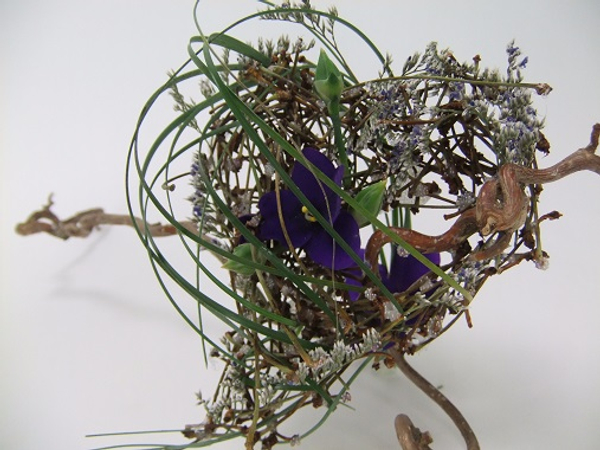
Plant material hydrate quicker in warm water because it contains less air and flows easily into the flower stem but not all plant material can tolerate warm water while others actually benefit from a short stem bath of boiling water.
There are so many factors to keep in mind when choosing plant material that being compassionate towards the plant material itself is often the last thing on our minds when designing. But with a bit of care and consideration it is easy to understand why we need to carefully condition the plant material to get the best results to make our hard work and beautiful designs last for as long as possible.
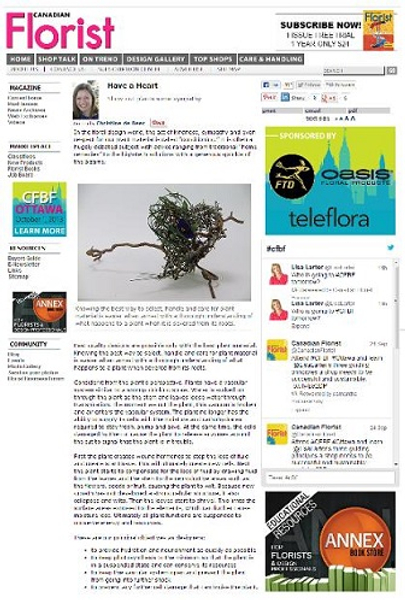
Thank you Canadian Florist Magazine for inviting me to be part of your Sympathy Design issue. It is an inspirational resource for all Florists. Have a look at the on-line magazine
Sign up for my weekly newsletter
Every week I add a new design with related tutorials. Be sure to subscribe to receive an email notification with design inspiration.
